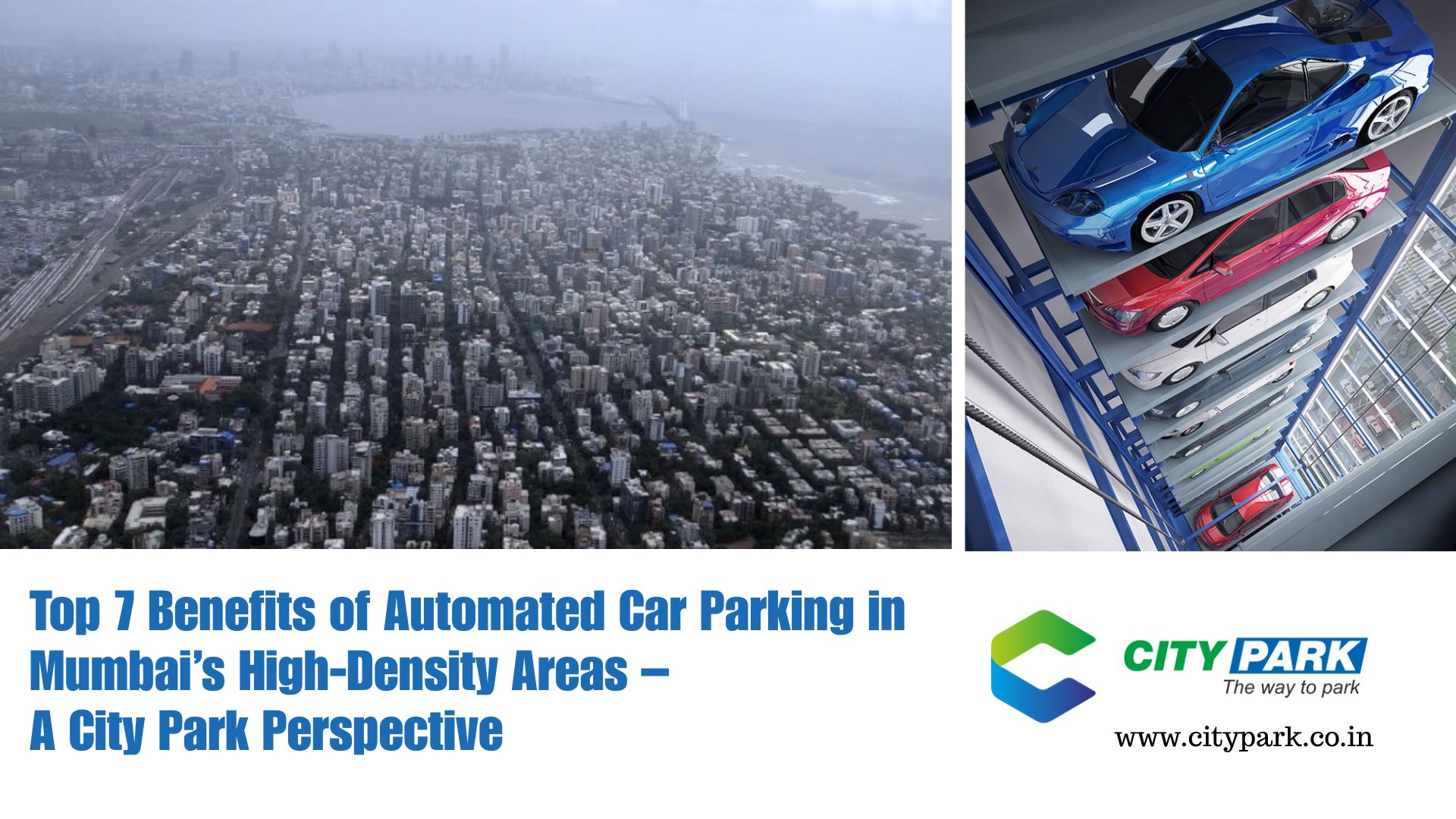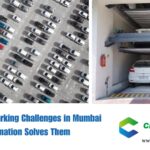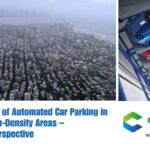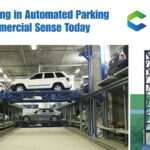Automated vs. Conventional Parking in Mumbai: Which Saves More Space & Money?
Mumbai is a city defined by ambition, density, and constant movement. With a population that continues to grow and a limited supply of land, parking has become one of the most pressing urban concerns. From residential towers to commercial compounds, hospitals to malls, nearly every development in Mumbai struggles with how to provide adequate parking without compromising on space or financial viability.
This challenge has led many developers, architects, and housing societies to consider alternatives to traditional parking systems. The most popular among them is the Automated Parking System (APS) — a modern, mechanical, and significantly space-efficient alternative to conventional parking.
But the big question remains:
Automated Parking vs. Conventional Parking — which is more space-efficient and cost-effective in Mumbai?
This blog provides a detailed, data-backed comparison to help builders and decision-makers choose the right parking solution for their project.
Understanding the Core Difference
Conventional Parking (Traditional Parking)
Traditional parking involves:
- Manual driving inside the structure
- Ramps
- Driveways
- Wide turning circles
- Multiple entry/exit paths
- Human-controlled parking
This model is still widely used in residential complexes, office buildings, and shopping centers.
Automated Parking System (APS)
Automated parking systems involve:
- Mechanised movement
- Robotics or mechanical lifts
- Vertical/horizontal stacking
- Automated retrieval systems
- No human movement inside the parking zone
APS uses advanced engineering to park more vehicles in significantly less space.
Now, let’s dive deeper into how both systems compare in space efficiency, cost, safety, environmental impact, and long-term value — especially in the context of Mumbai’s unique urban landscape.
1. Space Utilisation: Automated Parking Wins by a Large Margin
Mumbai’s biggest challenge is space scarcity. Every square foot matters — especially in premium zones like Bandra, Lower Parel, Andheri, Powai, and BKC.
How Conventional Parking Uses Space
Traditional parking requires:
- Ramps consuming up to 25% of building area
- Driveways 5–6 meters wide
- Turning radius zones
- Clearances for human movement
- Ventilation areas
- Extra lighting
As a result, 40–50% of the parking structure’s space is wasted on movement rather than actual parking.
How Automated Parking Uses Space
APS eliminates:
- Ramps
- Circulation space
- Human movement inside bays
- Large turning areas
It only requires:
- Drop-off bay
- Mechanical stacking area
- Vertical shafts
Space Comparison (Approximate)
| System Type | Cars per 1,000 sq. ft. |
| Conventional Parking | 14–18 cars |
| Automated Parking | 28–45 cars |
APS can provide up to 2.5 times more parking capacity on the same footprint.
Why APS Saves More Space in Mumbai
- Land is expensive – more cars per sqft = more value
- High-rise buildings prefer vertical stacking
- Irregular plots benefit from custom-designed APS
- Parking can be built underground, above ground, or integrated vertically
Winner: Automated Parking
2. Construction & Infrastructure Costs
Price is a major factor in parking design. But traditional assumptions that conventional parking is “cheaper” don’t always hold up in Mumbai.
Cost Structure of Conventional Parking
Conventional parking incurs costs for:
- Ramps
- Driveways
- Extra concrete
- Larger excavation
- Ventilation systems
- Lighting
- Fire safety
- Waterproofing
- Additional structural requirements
This results in substantial civil work investment.
Cost Structure of Automated Parking
APS involves:
- Mechanical parking equipment
- Electrical & automation control
- Smaller civil footprint
- Minimal ramps & excavation
- Compact construction
Cost Comparison (Approx.)
| Metric | Conventional Parking | Automated Parking |
| Civil Work Cost | Very High | Low to Moderate |
| Equipment Cost | Very Low | Moderate to High |
| Overall Cost per Car (Mumbai) | ₹2 lakh – ₹4 lakh | ₹1.2 lakh – ₹12 lakh |
| Cost Per Sq. Ft. | High | Low |
Cost Per Car: Deeper Insight
In premium Mumbai areas, land cost can exceed:
- ₹25,000 – ₹80,000 per sq. ft. (South Mumbai)
- ₹15,000 – ₹40,000 per sq. ft. (Western suburbs)
Since conventional parking wastes more space, the land cost skyrockets.
APS allows more parking in less land, lowering total project cost.
Which Saves More Money Overall?
- In smaller buildings: conventional may be cheaper initially
- In high-rises or premium zones: APS saves more money in total value per square foot
Winner: Automated Parking (for medium to large-scale projects)
3. Operating & Maintenance Costs
Let’s compare the long-term financial impact.
Conventional Parking O&M Costs
- More attendants
- Higher electricity (lighting, ventilation)
- Higher wear and tear
- More cleaning
- More repainting
- Frequent repairs for ramps and flooring
Automated Parking O&M Costs
- Minimal staff
- Low electricity consumption
- Low wear and tear
- Minimal cleaning
- Yearly mechanical maintenance
APS typically requires an Annual Maintenance Contract (AMC) costing:
- ₹2,000 – ₹5,000 per slot per year
Which Saves More Money Long-Term?
Automated systems are clearly more efficient and cost-effective over 10–20 years.
Winner: Automated Parking
4. User Convenience & Time Efficiency
Conventional Parking Challenges
- Long queues during peak hours
- Time wasted searching for slots
- Tight corners and difficult manoeuvring
- Safety risks in basements
- Inconvenient for senior citizens and women
Automated Parking Benefits
- Drop-and-go convenience
- Automated retrieval
- Digital interface
- No walking through dark basements
- Quick parking and exit
- Accessible & safe
APS offers a premium, international user experience.
Winner: Automated Parking
5. Safety & Security
Conventional Parking Risks
- Human errors
- Accidents inside basements
- Vehicle scratches
- Theft or vandalism
- Poorly lit zones
Automated Parking Safety Features
- No human entry
- No accidents
- No theft or damage
- Full CCTV surveillance
- Controlled access
- Fire detection systems
- Anti-drop safety features
Safety-wise, automated systems offer superior performance.
Winner: Automated Parking
6. Environmental Impact
Mumbai is prioritizing sustainability — and parking plays a significant role.
Conventional Parking Environmental Impact
- High carbon emissions due to vehicle movement
- Fuel wastage
- High energy usage
- Heavy concrete structures increase carbon footprint
Automated Parking Environmental Impact
- Zero internal driving
- Reduced emissions
- Lower energy consumption
- Less concrete usage
- Smaller footprint = reduced environmental impact
APS supports Mumbai’s Smart City and sustainability goals.
Winner: Automated Parking
7. Real Estate Value & Market Positioning
Conventional Parking Offers
- Basic functionality
- Lower construction appeal
Automated Parking Offers
- Premium positioning
- High-value amenity for luxury buildings
- Better floor space ratio usage
- Higher resale value
- Modern, future-ready infrastructure
Real estate developers prefer APS to increase property value.
Winner: Automated Parking
Final Comparison: Which Is Better for Mumbai?
| Factor | Conventional Parking | Automated Parking |
| Space Efficiency | ⭐⭐ | ⭐⭐⭐⭐⭐ |
| Initial Cost | ⭐⭐⭐⭐ | ⭐⭐⭐ |
| Long-Term Value | ⭐⭐ | ⭐⭐⭐⭐⭐ |
| User Convenience | ⭐⭐ | ⭐⭐⭐⭐⭐ |
| Safety | ⭐⭐ | ⭐⭐⭐⭐⭐ |
| Sustainability | ⭐⭐⭐ | ⭐⭐⭐⭐⭐ |
| Real Estate Value | ⭐⭐⭐ | ⭐⭐⭐⭐⭐ |
Conclusion: Automated Parking Saves Both Space & Money in Mumbai
After comparing both systems across all critical factors, the conclusion is clear:
Automated Parking Systems save far more space and deliver greater long-term cost efficiency than conventional parking — especially in Mumbai’s high-density areas.
While conventional parking may seem cheaper initially, the high land cost, wasted space, and long-term operational expenses make it far less economical in the bigger picture.
Automated Parking Is Ideal For:
- High-rise apartments
- Commercial towers
- Corporate parks
- Hospitals
- Malls
- Public parking
- Premium residential projects
Conventional Parking Is Suitable For:
- Small buildings
- Low-budget projects
- Low-traffic zones
As Mumbai continues to grow upward and outward, automated parking is no longer an optional luxury — it’s a necessity for future-ready urban design.











